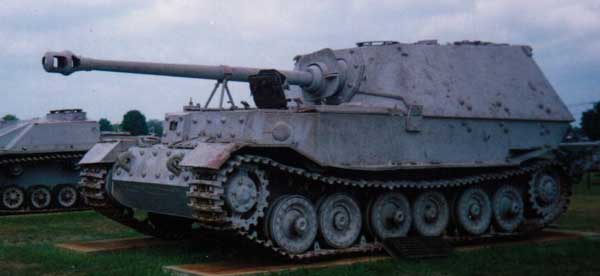|
|
|
ELEFANT
ELEFANT

|
|
The Elefant (originaly called Ferdinand after it's designer, Ferdinand Porsche) had like the Panther,
a bad intrduction at Kursk were the Elefant was first used as a major offensive weapon. Unlike the Panther however, which became loved by its
crews and respected by its enemies, the Elefant never achieved success.
This monster of armour carried 200mm of
armour in the front which offered incrediable protection. It's 80mm thick sides and back was formidable as well. With
all the weight that came with such armour protection, the Elefant was vary slow with poor mobility. Once it's infantry support had been
beaten off, the Elefant suffered badly at the hands of Russian soldiers with flame-trowers, Molotov cocktails or explosive charges. |

|
|
With lessons learned at Kursk, future models carried a machine gun in the front hull. Despite this, the Elefent was never destined to
be an assault weapon. However, used correctly, the Elefant had something to offer.
|
|
Specifications of the | |
WEIGHT | 66.9 Tons |
|---|---|
CREW | 6 |
ARMAMENT | 88mm Pak 43/2 |
ARMOUR | 200 mm front, 80mm sides/back |
ENGINE | Two each, Maybach HL120TRM V-12, 530 hp |
SPEED | 12.5 mph |
RANGE | 95 miles |
LENGTH | 26' 10" |
WIDTH | 11' 3" |
HEIGHT | 9' 10" |
|
|
|
German divisional Chaplin, Martin Tarnow, in his notes “last hours,” has described the
suffering and death of so many men. |
| HOME | BACK |